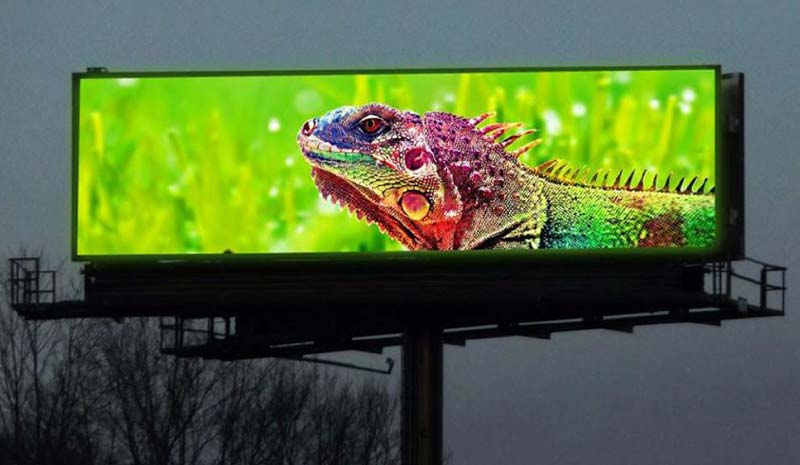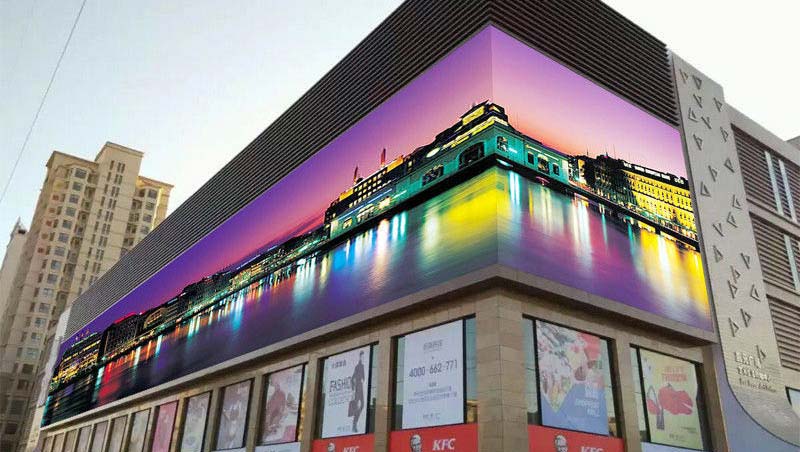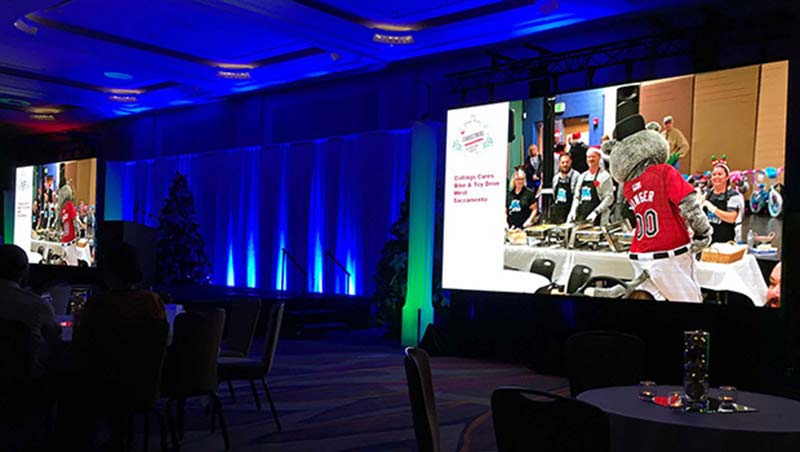How to Make Your LED Display Moisture-Proof in Summer?

The rainy and humid weather in summer brings no good to LED display. The pervasive vapor will increase the humidity in the air and affect the normal operation of LED display. Long-term high humidity environment may cause damage to electronic components and lead to problems like dead lamp, dark light, short circuit and open circuit, resulting in performance failure and impairing function and life of LED display. Then how to make your LED display moisture-proof is an issue that needs to be solved to both indoor and outdoor LED display. Here are some tips we gonna share with you.
Moisture-proof on LED module
The storage environment of LED module has to be dry and well ventilated. They have to be padded with pallets or other objects rather than placing on the ground directly. If possible, a temperature and humidity monitor should be installed in the storage room and maintain the humidity below 60% RH, which is ideal storage humidity for LED module.
If the LED module has been stored exceeds 1 month, a pretesting on brightness is needed before assembling to screen. The whole pretesting takes 6 hours at different levels of brightness: the first 2 hours with 10% and 30% of full bright respectively. 2 hours with 60% of full brightness. And another 2 hours with 80% and 100% of full brightness respectively. By performing these procedures, the humidity on the LED module will be gradually evaporated and won’t cause damage on the LEDs.
Moisture-proof on outdoor LED display

Outdoor LED display is designed to be waterproof but there is no way to stop the vapor and moisture. When installing LED display, a temperature and humidity sensor should also be installed to monitor the changes of the humidity. If the cabinet is already with monitor card, it can monitor the temperature, humidity, smoke, working condition of modules and power supply etc. Much advanced and convenient.
The LED display has to be inspected when it suffers its first rainy day or heavy rain after installation, to make sure there is no any sign of moisture, vapor, leak inside of the cabinet. Any problem found should be fixed immediately to prevent worse situation.
If the ambient humidity ranges from 10% to 85%, then the LED display has to be powered on at least once a day, each time the display works should be more than 2 hours. If the ambient humidity is higher than 90% RH, the LED display has to work more than 4 hours every day. Long time no use in high humidity circumstances will cause damage to the LEDs and other humidity sensitive electronic components, then affect the function and lifespan of LED display.
Moisture-proof on indoor LED display

Indoor fixed LED display
If the ambient humidity ranges from 10% to 65%, the LED display has to be powered on at least once a day, each time the display works should be more than 4 hours. If the ambient humidity reaches higher than 65% RH, the LED display has to work more than 8 hours every day.
Indoor rental LED display
After each event, the LED display panels have to be put back into the road case for sealed storage. Each road case shall be provided with desiccant or hygroscopic bag of not less than 50g. The desiccant or hygroscopic bag shall be inspected regularly and replaced every 2 months.
If the ambient humidity ranges from 10% to 65%, for every half a month, the LED display should be taken out and light up to display video for at least 2 hours or more. If the ambient humidity is higher than 65% RH, the frequency will be every week and light up for more than 3 hours or more.
The indoor rental LED display can’t be used for outdoor rental events, especially in the open air. If the LED display suffers water spraying by accident, turn off the power immediately first, then wipe away the water and dry it with dryer. After that, the LED panel should be placed for 2 hours and then light up for anther 2 hours.
In short, whether indoor or outdoor LED display, the most effective way to avoid moisture damage to the LED display is to use it frequently. A frequently used LED display screen suffers much smaller humidity effect than the less used display. The heat generated from working LED display can evaporate some vapor, thus greatly reducing the possibility of short circuit caused by moisture.
